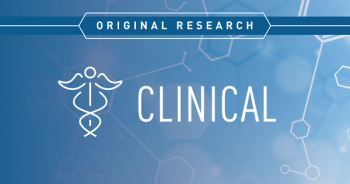
Supplements and Featured Publications
- Systemic Lupus Erythematosus: A Primer for Managed Care
Systemic Lupus Erythematosus: A Primer for Managed Care
Although systemic lupus erythematosus (SLE) is often called “lupus,” there are actually 4 different kinds of lupus, of which SLE is the most common form. In addition to SLE, there is discoid lupus erythematosus, drug-induced lupus erythematosus, and neonatal lupus. Discoid, or cutaneous, lupus is limited to the skin, where it manifests as a variety of different rashes.1 Drug-induced lupus, which appears similar to SLE, usually dissipates within several weeks of discontinuation of the drugs that caused it.2,3 Neonatal lupus is quite rare, and is caused by a mother’s antibodies being passed on to the fetus. SLE is usually what is referred to when the word “lupus” is used.4
SLE is a rare autoimmune disease. In 2008, it has been estimated that between 161,000 and 322,000 American adults had SLE.5 Most of these adults are women in their childbearing years. The Euro Lupus Project analyzed 1000 patients with SLE; 91% were women, and the mean age at the onset of symptoms was 29 years.6 The impact of SLE on pregnancies can be severe. A meta-analysis calculated that 16% of pregnancies in women with SLE resulted in spontaneous abortion and 6.1% resulted in stillbirth or neonatal death. Overall, nearly a quarter of all pregnancies were unsuccessful in women with SLE and 39% of births were premature.7
Please visit
To view the full newsletter, please click
- Yancey KB, Lawley TJ. Immunologically mediated skin diseases. In: Longo DL, Fauci AS, Kasper DL, Hauser SL, Jameson JL, Loscalzo J, eds. Harrison’s Principles of Internal Medicine. 18th ed. New York: McGraw-Hill; 2012. http://www.accessmedicine.com/content.aspx?aID=9098448. Accessed January 10, 2012.
- Costner MI, Sontheimer RD. Lupus erythematosus. In: Wolff K, Goldsmith LA, Katz SI, Gilchrest BA, Paller AS, Leffell DJ, eds. Fitzpatrick’s Dermatology in General Medicine. 7th ed. New York: McGraw-Hill; 2008. http://www.accessmedicine. com/content.aspx?aID=2991998. Accessed January 10, 2012.
- Hahn BH. Systemic lupus erythematosus. In: Longo DL, Fauci AS, Kasper DL, Hauser SL, Jameson JL, Loscalzo J, eds. Harrison’s Principles of Internal Medicine. 18th ed. New York, NY: McGraw-Hill; 2012. http://www.accessmedicine.com/content. aspx?aID=9136499. Accessed January 10, 2012.
- Mayeaux E Jr. Lupus erythematosus (systemic and cutaneous). In: Usatine RP, Smith MA, Chumley H, Mayeaux E Jr, Tysinger J, eds. The Color Atlas of Family Medicine. New York: McGraw-Hill; 2009. http://www.accessmedicine.com/content. aspx?aID=8208514. Accessed January 10, 2012.
- Helmick CG, Felson DT, Lawrence RC, et al. Estimates of the prevalence of arthritis and other rheumatic conditions in the United States: part I. Arthritis Rheum. 2008;58(1):15-25.
- Cervera R, Khamashta MA, Font J, et al. Systemic lupus erythematosus: clinical and immunologic patterns of disease expression in a cohort of 1,000 patients. Medicine. 1993;72(2):113-124.
- Smyth A, Oliveira GH, Lahr BD, Bailey KR, Norby SM, Garovic VD. A systematic review and meta-analysis of pregnancy outcomes in patients with systemic lupus erythematosus and lupus nephritis. Clin J Am Soc Nephrol. 2010;5(11):2060-2068.
Newsletter
Stay ahead of policy, cost, and value—subscribe to AJMC for expert insights at the intersection of clinical care and health economics.















































